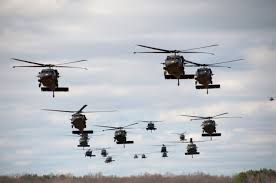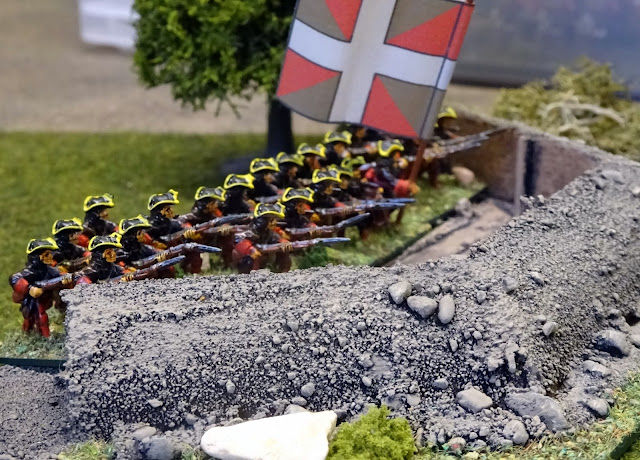"So Carnehan weeds out the pick of his men, and sets the two of the Army to show them drill and at the end of two weeks the men can manoeuvre about as well as Volunteers. So he marches with the Chief to a great big plain on the top of a mountain, and the Chiefs men rushes into a village and takes it; we three Martinis firing into the brown of the enemy".
Kipling "The Man Who Would Be King"
"Though Cobra's and Huey's were the same loaded weight, 9,500 pounds, the latter were quieter and smoother in the gunship role, carrying sixty-two rockets and four thousand mini-gun rounds. Never in history had so many tactical helicopters been deployed – nor would be again. ‘There were times when over a hundred were in the air over a battle,’ said Hickman [who was an American Huey pilot in Vietnam]. ‘When you saw a ten-ship lift going into an assault with four supporting gunships and a smoke ship, it was just awesome.’*"
*Is it just me who is reminded of the "Tears in rain" (also known as the "C-Beams speech") monologue at the end of Bladerunner? 😊
- Max Hastings "Vietnam: An Epic Tragedy, 1945-1975"
-
Robert Mason "Chickenhawk"- Huey pilots account of his war in Vietnam and after .. troubled life, brilliant book...
- Michael Herr "Dispatches" - Herr was a war correspondent for Esquire magazine and the book describes the author's experiences in Vietnam. I'm a bit of an old hippy, must have read this about the time it came out..
~~~~~~~~~~~~~~~~~~~~~~~~~~~~~~~~~~~~~
The seventh book in this beyond compare series. O'Brian fans call reading the entire series a 'circumnavigation', so this is my second - but whereas for the first one I raced through them all, practically one after another as I wanted to know what happened to lucky Jack Aubrey in the next book, for this circumnavigation I'm taking my time and enjoying them..At the end of the previous book (which was set during the Anglo American, War of 1812), Aubrey and Maturin (along with Maturin's intended Diana Villiers) had escaped from the American's to a British frigate which had then engaged one of the American heavy frigates in combat and won the day - safe in British held territory, Jack awaits news from home and a ship to return.
When they finally get a ship home they are chased by two American privateers, Maturin has managed to snatch some very valuable intelligence papers and it is clear that either he, or Diana who has absconded with a large diamond, is the target..
Back in England at last, but without a ship, and penniless again due to a poor business investment Jack is saved (in more ways than one!) by a mission Maturin is asked to undertake, and in which he asks for Jack as captain of the ship needed to take him to the site of the mission in the Baltic.
After a successful conclusion to the mission, their ship is wrecked on the way home, and they are captured, and imprisoned by the French - Maturin is then identified as a spy by one of the American intelligence officers and all is not looking good, but there is then a final and surprising turn... brilliant!! 9/10
~~~~~~~~~~~~~~~~~~~~~~~~~~~~~~~~~~~~~
Rebasing is proceeding apace.. the following after the first coat of "Forest green"..
They have since had a second coat, and flocking has started...
~~~~~~~~~~~~~~~~~~~~~~~~~~~~~~~~~~~~~
"Laters", as the young people are want to say...


























